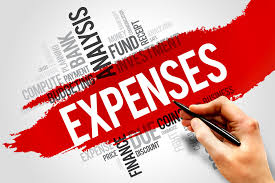How to Write a Business Plan: A Focus on the Main Concepts

Introduction
Writing a business plan is a huge job. It taxes one mentally and emotionally. However, if one can have an organized process for developing the plan, things can go more smoothly. This article seeks to bring some organization to this experience. Also, this article assumes the purpose of the business plan is to obtain a loan. There are slight variations for other purposes.
Business plans have to be written with the reader in mind. If we assume the reader will be a potential lender, then the plan must be written to convince the lender to take a risk. A business plan for a loan is a really big sales pitch and every part of the plan has to be designed with the objective of convincing the lender to loan you money. A plan should be written carefully and thoughtfully with that objective in mind.
The first four sections are “Who?”, “What?”, “Why?” and “How?”. The next two two sections involve expenses and income. The last section is appendices. Each of these will be examined.

Who?
This first section describes the key managers of the business. The managers may be the owners of the business or, in the case of ownership that is widely dispersed, nonowners authorized to act in behalf of the company. This section should provide a brief biography of each of the key managers and the position each holds in the business. Resumes would also be good, but should be placed in the appendices.
Another topic that should be included in this section are key partnerships the firm has with suppliers, customers, or other entities. These should be alliances of the company that are extremely important to the firm and the alliance and its uniqueness should be explained.
Another question that can be answer in this section is, “Who are the major competitors?” A listing of all the competitors with their strengths and weaknesses is a guide to helping you develop a strategy for getting market share. This analysis will show you areas in the market to avoid and areas in the market that are neglected by your competitors.

What?
This section details the main activities of the business. A manufacturing firm would describe all the main products it manufactures. A service firm would describe all the main services it provides. While this sounds easy, this is where some of the anxiety starts. “Why are we doing that?” and “Why aren’t we doing that?” are just two of the questions that start to create havoc with one’s mind. That is fine as long as the writers decide definitely what is being done and what is not being done. However, it is equally possible to let one’s mind wander and then have five hundred products or services, most of which have never been offered before. The goal here is for the writer to focus on what the company currently does.
This section also includes the main resources the business has in order to operate. Machinery, plants, unique personnel, and vendor relationships are just a few examples of resources a company can have. A new company can also focus on the resources it intends to acquire in order to fulfill its mission.

Why?
Why does this business exist? Why should a customer buy from this company? Why would a customer find your business more attractive than another business? A business must have a unique position in the market, one that customers find beneficial enough to actively get its products. Some firms have the lowest prices while other firms have excellent customer service. If the business or product does not stand out from all the others, then why would customers do things differently? If your business or product does not provide a unique value to customers, then it becomes very difficult to market the business. You will never see an advertisement that says, “We are just like everyone else”.

How?
This section examines three different questions: “How much of a relationship do we have with each of our customer groups”, “How are we going to get products/services to our customers”, “How are we going to attract our customers”. The answer to the first question depends upon the industry and whether you want to build brand loyalty or not. High price items such as cars, particularly if there are repeat purchases, require relationships to be built to keep the sales repeating. However, low price items such as gum do not require such relationships. But there is also an in-between, and customer relationships to some degree can build brand loyalty. This section forces you to think about the types of relationships you want with your customers and how to build those relationships.
The second question involves the distribution channel. All the great relationships with customers are no good if you cannot get the product or service to the customer. Being able to deliver is one of the most sacred issues in business. This section will force you to consider how you get goods or services to your customers and the potential pitfalls of those delivery systems.
The third question has to do with marketing. It is impossible to market to everyone; you would be wasting your money. A good marketing plan will isolate a primary and secondary target market and, by understanding the characteristics of the people in those markets, will advertise in places that those people are most likely to see it. The concept here is to find the people most likely to buy your product or service and advertise in the places where they most frequently are.

Expenses
This section is an overview of the three types of expenses the business will have. The first set of expenses are the start-up expenses – all the costs to get the business together before the doors open. Such expenses would be fees to file with the governmental agencies, down payment and rent prior to the doors opening, employee training, and fixtures to name a few. If you are getting a loan, the lender will want to know what you are spending the money on. So this needs to be a detailed list with as exact amounts as possible. It is also best to add to the total amount a 15% addition for any contingency expenses.
The second set of expenses are those expenses directly tied to providing the product or service offered. There are two goals here. First, this helps you to understand every cost component of what you are producing. Second, it allows you to calculate a cost per unit. The selling price of an item should never be set until you know what it costs to provide it. This is also a great thing to show a lender to demonstrate that your selling prices are over the cost per unit and, therefore, making money.
The third set of expenses are the business operating expenses that are not tied to making a product or service. Things like rent, utilities, interest, and taxes are some of the items that fit in this category. These are usually totaled on a monthly basis. The importance of these is that you can now calculate how much you have to sell in order to cover all your expenses.

Income
Income was placed after expenses because the selling price is dependent on the costs required to make the product or service. Once you determine a selling price based on your product costs, then you can project how much you will sell and the income it will generate. These figures become the basis for forecasting cash flow, income statements, and balance sheets.

Appendices
This last category is a catch-all for the supporting documentation in the previous sections. Resumes, assumptions, and detailed explanations of how figures were derived should be present in the appendices. However, there are other things the lender will want to see. This section should also include the tax returns of the owners (if a new business) or the tax returns of the business (if an old business). There should also be cash flow projections, income statement projections, and balance sheet projections for the next few years.
Final Thoughts
This article describes several areas that need to be addressed in a business plan. The more detail you can provide, the fewer question a prospective lender will have. Detail is your friend. Keep in mind the goal is to convince the lender to invest in your business. Would you place your money in a business that gave you sketchy details?








